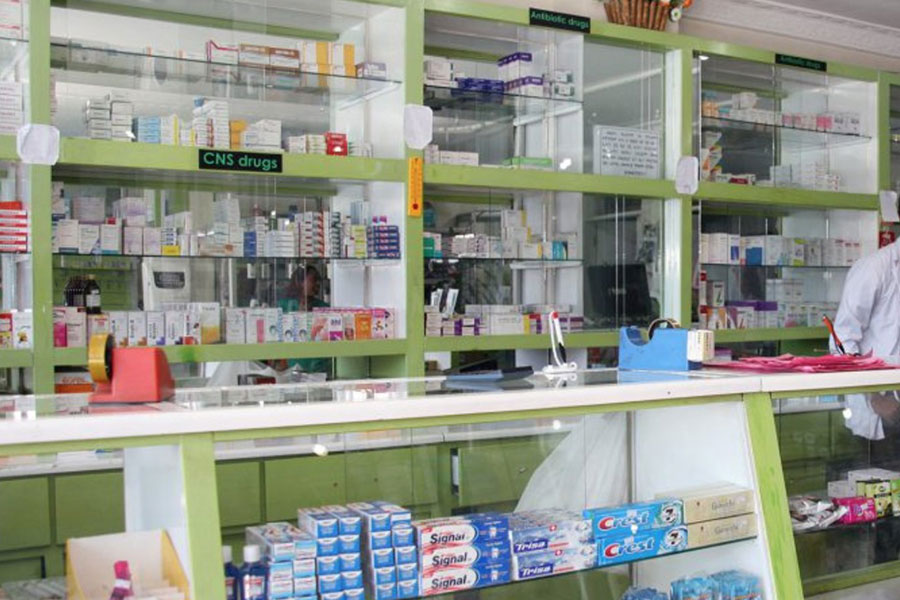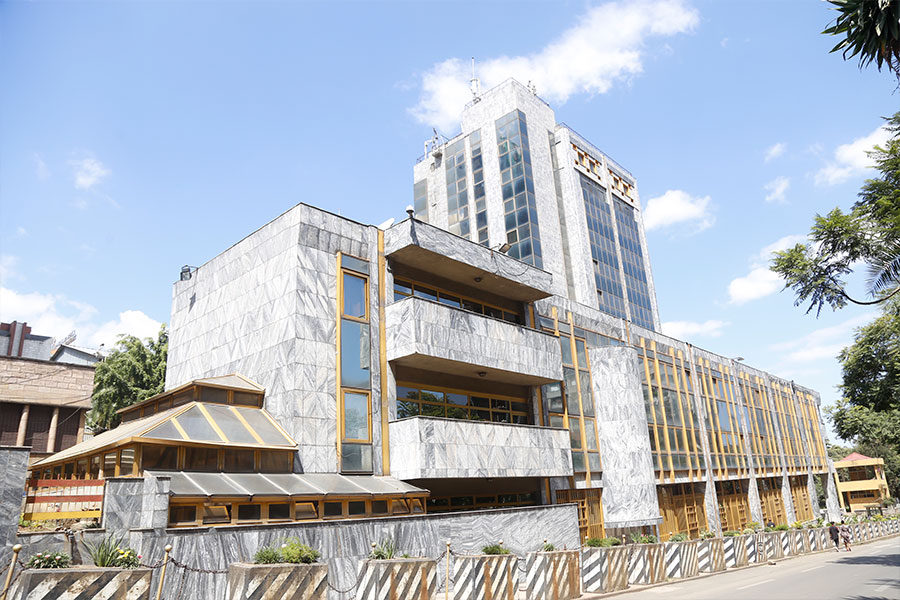
Sunday with Eden | Mar 05,2022
Not much noise was coming from the six pullet barns as expected from such places. Five remained empty; four employees stood nearby the only barn housing chicken coops, readying to feed the fowl.
A few feet away, a casually dressed man observed their work. Calmly. It was Dendin Debabu, a general manager of the poultry farm for the past 15 years. In his tenure at Alema Koudjis, in Bishoftu town, 61Km southeast of Addis Abeba, he has seen many ups and downs.
Dendin could not recall when nearly all the barns were as empty.
The farm was alive with the clucking of tens of thousands of chickens and workers rushing to and fro. Things were uncharacteristically quiet last week. Part of the reason behind the empty coops is a shortage of parent stock. All large-scale poultry farms are dependent on parent stock, mainly imported from Europe and elsewhere in Africa.
Nonetheless, things were not as desperate for a farm run by Alema Koudjis Plc, one of the oldest and largest of its kind in the country. Developed on a 5,000sqm plot, it is a joint venture established nearly a decade ago by Alema Farms and De Heus Animal Nutrition Company, a Dutch firm.
Alema Farms itself has been in business for 25 years, incorporated by Alemayehu Amdemariam and Lemma Asfaw. The company runs 12 farms and can breed more than a million layer and broiler chickens each year.
The joint venture in Bishoftu operates with a workforce of 650 and boasts around half a billion Birr in capital. The six pullet barns on the premises can house up to 16,000 chickens each.
Alema used to import parent stock, such as Lohmann Brown Chickens – among the most valued commercial laying chickens globally – from Germany twice a year. Forex shortages have impeded the farm from importing the fowl.
"We're not importing parent stock,” said Dendin.
This year, the farm is dependent on 500 male and 600 female parent stock chickens it imported almost a year and a half ago for 6,600 dollars. The breed has egg and meat productivity five times higher than indigenous chicken.
The farm's troubles, however, go far deeper than the forex shortages.
Alema lost 30,000 broiler and layer chickens two months ago to fowl cholera, a contagious, bacterial bird disease. It is responsible for the deaths of one million chickens in Ethiopia every year.
It was a blow to Dendin and his staff, who were eager to capitalise on the Easter holiday market. Alema had no chicken to sell for the holiday.
Last Christmas was different. The farm supplied the market with 10,000 broiler chickens, weighing up to two kilograms, for 150 Br a head. But the loss of 30,000 chickens could not have come at a worse time when the farm was struggling to recover from the COVID-19 pandemic and the losses it faced from the subsequent drop in demand.
Pictured above is the only one of six pullet barns housing chickens on a poultry farm run by Alema Koudjis Plc in Bishoftu. The company lost close to 30,000 fowl to disease in recent months.
Alema is not the only poultry farm in hot water.
Two-dozen large-scale poultry farms were registered with the federal trade registry. The Ministry of Agriculture is responsible for issuing certificates of competency to large farms, while regional and zonal agricultural bureaus give them to medium and small producers.
However, less than 10 are in business, and many are unable to use more than 40pc of capacity. Last year, the 14 large-scale poultry farms reported over 123 million Br losses due to the changing economic and market conditions.
Of the total losses, day-old chicks accounted for the largest share at 103 million Br. Broiler and partner chickens caused around six million Birr losses, while another 2.6 million Br was lost on pullets, fertilised eggs and unfertilised eggs.
Many commercial farmers have resorted to disposing of chicks to avoid further losses on feeding costs. Around three million chickens have been disposed of thus far.
Neither are smaller poultry farms immune to the difficulties. Most are dependent on larger farms to supply "exotic" chickens brought in from abroad.
Established three years ago in Dire Dawa, Tahen Poultry & Business Centre is one such farm.
When Samuel Estifanos established Tahen Poultry four years ago with half a million Birr in capital, he planned to upgrade the poultry farm to the large scale within five years. He hired 12 to run his farm and bought 2,000 exotic day-old chicks from large-scale farms such as Alema and Elfora Agro-Industries, the latter a subsidiary of Midroc Investment Group. He managed to breed and sell up to 50,000 layer and broiler chickens within six months.
However, it was a fleeting success.
Samuel's dreams were squashed shortly after the supply of exotic breeds from large firms dried up. It shut down less than a year after it was opened.
Now, Samuel's business is limited to distributing eggs collected from farmers. His company sells up to 10,000 eggs a day.
All commercial parent stocks are brought into the country. Cobb500, Ross 308 and Hubbard are the most common breeds adapted in Ethiopia, while Bovans Brown, ISA Brown, Lohmann Brown and TETRA-SL are the popular commercial layer breeds.
under the wing of the Ethiopian Poultry Producers & Processors Association
The Ethiopian Institute of Agricultural Research (EIAR), a federal agency researching the poultry industry, validates imported stocks. The research the Institute conducts includes studies on genetic improvement by evaluating imported layer, broiler, and dual-purpose chickens.
Prices for chicken feed have been on the rise, putting some farms out of business. Poultry farms also have to contend with a lack of forex to import parent stock and the unavailability of vaccines.
Poultry research in Ethiopia goes back to the early 1950s, when the Jimma Agricultural & Technical School opened its doors at the former Alemaya College of Agriculture, now Haromaya University.
Other public universities and the International Livestock Research Institute (ILRI) are also researching the poultry industry. Their experts primarily focus on providing technology to increase productivity on poultry farms.
Established in 1955, Debre Zeit Agricultural Research Center is among the oldest institutions conducting studies on imported parent-stock chicken breeds. Red-barred, Lohmann Dual, and Novo Coluor are among the six breeds under evaluation since 2017.
There is a need to increase the low productivity of indigenous chicken species through interbreeding, according to Alemayu Gutata, director of Debre Zeit Agricultural Research Center.
Domestic breeds account for more than 90pc of the country's chicken population, while the remaining are exotic and hybrid breeds. The latest survey from the Ethiopian Statistics Service estimates the population at 59.5 million.
Domestic breeds produce fewer eggs and offer less meat than their imported counterparts. At Alema, a single exotic hen lays up to 320 eggs a year. It is over five times the average for local breeds.
Data obtained from the Ministry of Agriculture (MoA) reveals that 47.9tn of poultry meat and 2.5 billion eggs are produced annually. Per capita egg and chicken meat consumption stands at 57 and 2.85Kg. It is among the lowest in the world. Average annual per capita global consumption sits near 161 eggs and 63Kg of chicken meat.
Brazil and India lead the way in production. Last year, the South American giant produced 14.5 million tonnes of chicken meat, while India offered 114 billion eggs to the market. South Africa is the top producer of chicken meat and eggs in Sub-Saharan Africa, accounting for 55pc of the continent's annual production.
Despite the growth, the commercial poultry industry is yet to be able to satisfy the ever-increasing demand for poultry and poultry products. Close to 85pc of supplies come from traditional poultry production systems.
Poultry farmers face ballooning prices for feed inputs, putting many out of business.
The chicken feed consists of more than 14 ingredients, of which vitamin premix and polyunsaturated fatty acids are indispensable. The latter is mainly found in soybeans, which have spiked by 700 Br from 2,000 Br a quintal.
Mama's Poultry Farm, established as a small enterprise in Bishoftu five years ago with 50,000 Br capital, is among those struggling to keep up with rising costs for feed. Although the farm has been breeding layer and broiler chickens for the last five years, its managers say the rising expenditures have become unbearable.
Chicken feed is classified into conventional and unconventional varieties. Conventional feed is consumed by animals only. This includes alfalfa (Medicago sativa), a herb-rich. The plant is among some of the most widely-grown forage crops globally.
It is estimated that alfalfa covers nearly 532,000sqkm of land in Ethiopia.
Unconventional feed is prepared from wheat, maize, and soya beans – primarily used as food for human consumption.
There is fierce competition for conventional feed among poultry farmers, observed Alemayu of the Debre Zeit Research Centre. Large-scale farms like Alema import premixed concentrated chicken feed.
Dendin says the cost of running a poultry farm is rising. The farm spends 20 million Br a month to buy chicken feed.
It imports a fifth of its feed demand, mostly from the Netherlands and France, while it also sources from the local market to fill the gap. Wheat, maize and soybean are the primary grains to prepare the feed. The farm sources the crops from cooperative unions.
On top of the growing expenses for feed, Dendin has to deal with a dearth of vaccinations, especially necessary for large-scale farms, where vast numbers of chickens are packed closely together. Alema imports 15 types of chicken vaccines, mainly from France. However, it has been more than three years since the company sourced the jabs from Europe.
“We've been importing small quantities of vaccines from South Africa,” said Dendin. “But the volume is far from the company’s demand.”
The National Veterinary Institute (NVI), established in 1964, is the sole producer of poultry vaccines in Ethiopia. Though its laboratories churn out nine varieties of poultry vaccines, the Institute falls short of expectations from meeting demands.
Officials are well aware of the predicaments the poultry farms face.
Tsigereda Fekadu serves as a director of poultry development at the Agricultural Ministry. She and her colleagues are trying to help the industry with a proposed tax break made six months ago to the Ministry of Finance.
“The government is trying its best to deal with the problems,” she told Fortune.
The Director disclosed that the Ministry had granted large-scale farms permits to export broiler chickens as an alternative to earning foreign currency.
One of the companies benefiting from the decision is Alema, which began exporting to Somalia three years ago. It sent 30,000 one-day-old chicks annually, accounting for most of the 46,000 shipped abroad two years ago. Some 24.3tn of eggs were also exported over the same period.
Tsigereda alludes to a 10-year strategic plan approved a month ago as a long-term response to address the industry’s woes. It entails bolstered support to the private sector to double chicken meat production to 106,000tn over the coming decade and push egg production to 5.5 billion a year.
However, this might be a case of too little too late for poultry farms.
Dendin and his staff were ready last week to feed what few chickens they had left on their farm. If things continue the way they are, it will not be long before the company is forced to downsize its workforce further. Or close its doors. Time is ticking.
PUBLISHED ON
Apr 22,2022 [ VOL
23 , NO
1147]

Sunday with Eden | Mar 05,2022

Commentaries | Sep 03,2022

Verbatim | Sep 06,2025

Fortune News | Jul 23,2022

Radar | Nov 05,2022

Radar | Oct 22,2022

Fortune News | Mar 26,2022

Radar | May 28,2022

Editorial | Dec 04,2022

Editorial | Apr 09,2023

Dec 22 , 2024 . By TIZITA SHEWAFERAW
Charged with transforming colossal state-owned enterprises into modern and competitiv...

Aug 18 , 2024 . By AKSAH ITALO
Although predictable Yonas Zerihun's job in the ride-hailing service is not immune to...

Jul 28 , 2024 . By TIZITA SHEWAFERAW
Unhabitual, perhaps too many, Samuel Gebreyohannes, 38, used to occasionally enjoy a couple of beers at breakfast. However, he recently swit...

Jul 13 , 2024 . By AKSAH ITALO
Investors who rely on tractors, trucks, and field vehicles for commuting, transporting commodities, and f...

Oct 11 , 2025
Ladislas Farago, a roving Associated Press (AP) correspondent, arrived in Ethiopia in...

Oct 4 , 2025
Eyob Tekalegn (PhD) had been in the Governor's chair for only weeks when, on Septembe...

Sep 27 , 2025
Four years into an experiment with “shock therapy” in education, the national moo...

Sep 20 , 2025
Getachew Reda's return to the national stage was always going to stir attention. Once...